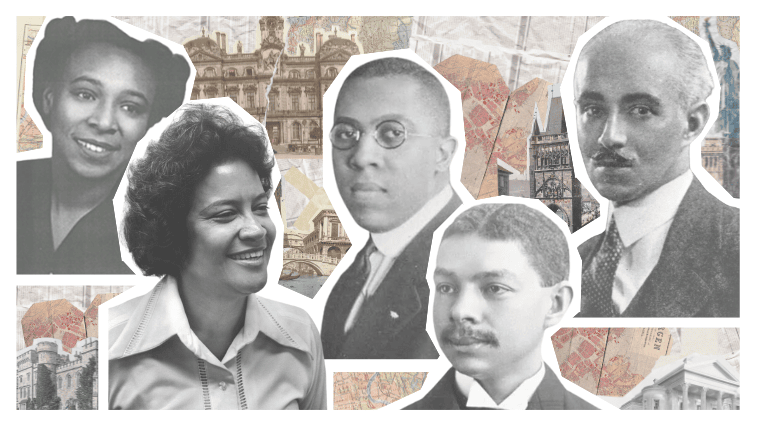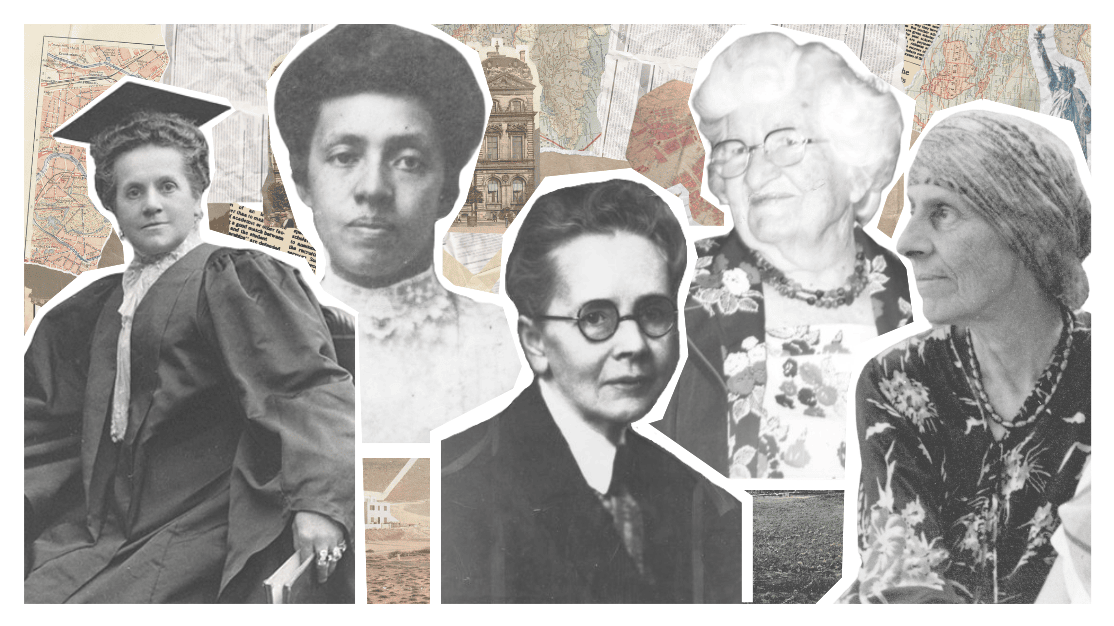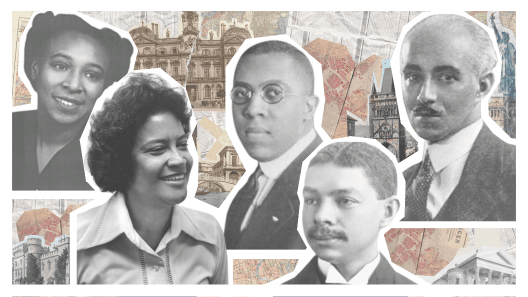
Building Inclusivity: Celebrating Black History in Construction, Architecture, & Engineering
In celebration of Black History Month, we’re highlighting some influential Black figures in construction, architecture, and engineering history. Even if you don’t know them by name, you will probably know their work!
Robert Robinson Taylor
1868 - 1942
Known for: Architecture
The son of a successful carpenter, Robert Robinson Taylor set his sights on MIT's School of Architecture, the first program of its kind in the world. He became the first Black student to enroll at MIT, and excelled in his courses despite facing prejudice from his classmates.
Upon his graduation in 1892, Taylor made history once again as the first accredited African-American architect. He began a long and successful career in architecture, including designing the campus for Booker T. Washington’s Tuskegee Institute. He eventually took up a position teaching architectural and mechanical drawing at the university, which he continued until his retirement in 1933.
In 1942, he died while attending services in the Tuskegee Chapel, the building that he considered his most outstanding achievement as an architect.
Norma Merrik Sklarek
1926 - 2012
Known for: Architecture
After demonstrating excellence in the fields of math, science, and art, Norma Merrik Sklarek was admitted to the School of Architecture at Columbia University in 1945. She was one of two women — and the only African-American — in her graduating class.
Sklarek passed her final licensing exam on the first try, becoming the first Black female licensed architect in the states of New York and California, as well as the first Black woman to join the American Institute of Architecture (AIA). Despite this feat, she struggled to be taken seriously in the industry, and initially only received offers below her expertise. On most projects, she was credited as "project architect" rather than "design architect."
She eventually gained recognition for her work, and is known for designing the Embassy of the United States in Tokyo, the Terminal One station at the Los Angeles International Airport, multiple campus projects at the University of California Irvine, and the Mall of America. She retired in 1992.
When presented with the AIA Whitney M. Young Jr. Award in 2008, AIA Board Member Anthony Costello declared her “the Rosa Parks of architecture” - a title that has solidified her reputation as one of the most influential Black architects in recent history.
Julian Abele
1881 - 1950
Known for: Architecture
As the first Black graduate of UPenn’s Department of Architecture, Julian Abele began making history at a young age. In his early career, he worked for Horace Trumbauer, the architect behind much of Duke University’s campus. During this time, he designed grand homes and manors, and became the primary designer of the Duke University Chapel.
Abele is also known for his work on the Philadelphia Museum of Art, the Great Hall at Monmouth University, the Widener Memorial Library at Harvard University, and Philadelphia's Central Library. At the end of his career, he had contributed to the design of over 400 buildings.
Despite his trailblazing legacy, racial prejudice barred him from walking freely on the Duke campus he had designed. The American Institute of Architects (AIA) also delayed his accreditation until 1942, 40 years after he had received his architectural degree. Today, his portrait hangs in one of the Duke buildings he designed, and he has begun to receive due credit for his impressive work.
David Crosthwait
1898 - 1976
Known for: Engineering
Many are familiar with heating, ventilation, and cooling (HVAC) systems, but few recognize the contributions of David Crosthwait, an African-American inventor and engineer.
Crosthwait made a name for himself through his innovative solutions to heating and ventilation problems, and his improved boiler, thermostat control, differential vacuum pump inventions transformed heating systems in larger buildings. Some of the high-profile projects he worked on include designing the heating systems for Radio City Music Hall and Rockefeller Center.
Over the course of his career, Crosthwait received 39 U.S. patents and 80 foreign patents for his inventions. He is also known for authoring the Dunham-Bush Hydronics Manual, an influential guide on the standards and codes for HVAC systems. He was recognized as the first African-American fellow of the American Society of Heating, Refrigerating and Air-Conditioning Engineers (ASHRAE).
Hattie Scott Peterson
1913 - 1993
Known for: Engineering
As the first Black female engineer and the first woman to join the US Army Corp of Engineers (USACE), Hattie Scott Peterson’s notoriety is hardly equal to her impact.
Peterson earned a BSc in Civil Engineering from Howard University in 1946, and began her career in Sacramento as a survey and cartographic engineer for the U.S. Geological Survey (USGS). Her work involved forecasting floods, designing navigation projects, and researching flood control issues — critical work for the ecologically vulnerable state of California.
Today, her legacy lives on in the “Hattie Peterson Inspirational Award,” bestowed annually by the Sacramento district of the USACE to an individual who exemplifies perseverance through social challenges. Peterson and her husband also left an endowment for scholarships at Howard University after her death.
Conclusion
As a minority-owned business for over 30 years, Outsource Consultants, Inc. is dedicated to an environment where diversity thrives. We currently hold MBEs in the states of New York and New Jersey, as well as the city of New York. We also recently acquired an MBE-certification with the SCA, and we’re excited to expand our already extensive project portfolio. For SCA-related projects, please reach out to Kaela Fanning at kfanning@outsourceconsultants.com.
For all other building code, zoning, and expediting projects, you can access our expert assistance at outsourceconsultants.com.








